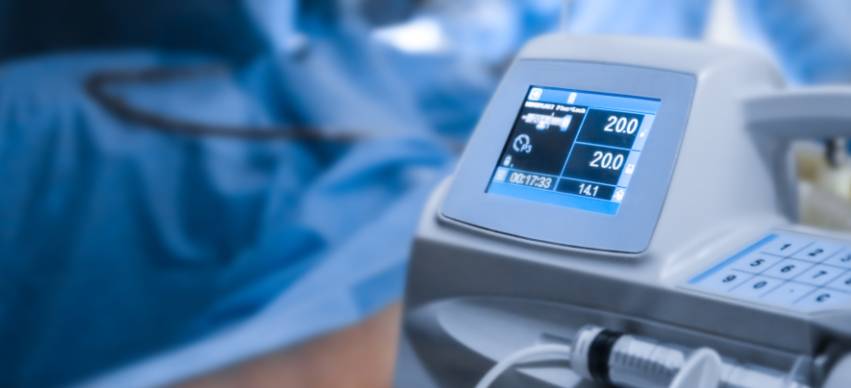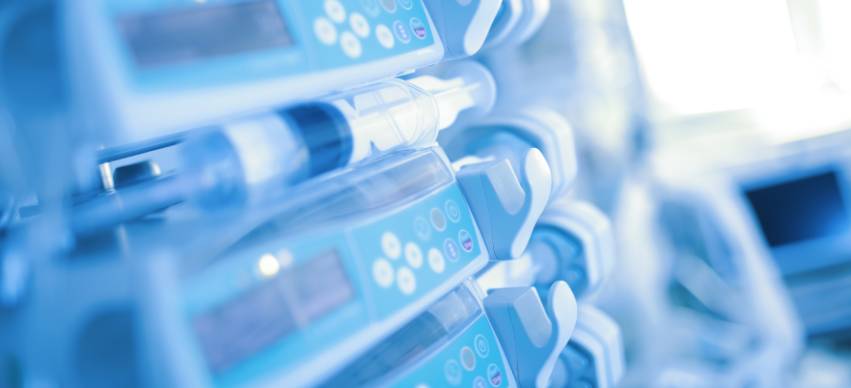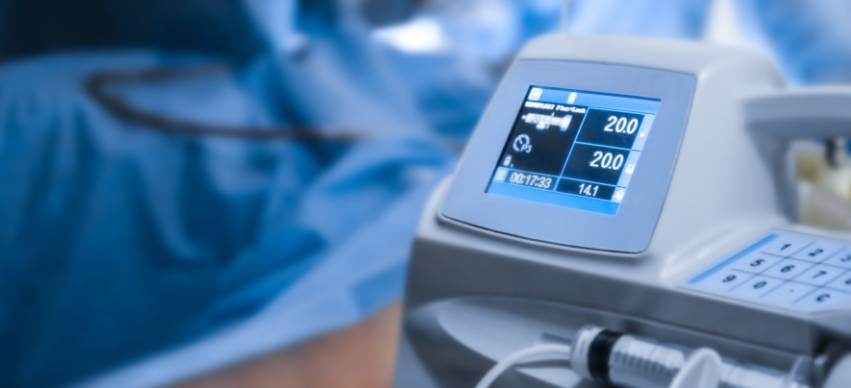
Whether you work in the intensive care unit, acute care unit, monitoring, or testing industry, a diaphragm pump is a valuable tool you'll likely use. With the help of flow control systems, value engineering, and broad customization, you can increase task efficiency, reduce costs, and improve reliability, making patients satisfied.
KNF Diaphragm pumps are used in virtually every monitoring, sterilizing, diagnosing, and analyzing device because of their dependability and quiet operation. You will also likely see diaphragm pumps used in various other contexts, such as increasing patient comfort, treatment, and sustaining life. Some medical devices that use diaphragm pumps are as follows: breathing apparatus, capnography, hospital beds, in vitro diagnostics (IVD), hematology, deep vein thrombosis treatment, and more.
How Diaphragm Pumps Work
How they function is straightforward. Like the crankshaft in a car and the connecting rod that moves the piston, the connecting rod in a variable-speed electric motor is located off-center and drives the piston. This rod translates the rotary action of the engine into the linear (pumping) motion of the motor. By moving the free end of the connecting rod, pressure is applied to the elastomeric diaphragm in the same way that pressure is applied to the flexible wall of a rigid box.
The 'head' of a pump is the metal box. When the diaphragm is drawn outward, the head experiences a vacuum. And when pushed inward, the diaphragm generates pressure. During the outward movement of the diaphragm, the gas or fluid enters the head via an intake valve. Exhaust valves allow gas or liquid to escape on the inward stroke. Accordingly, these pumps can be plumbed to generate a vacuum or pressure. They can also prime themselves.

Fields Of Application of Diaphragm Pumps
Capnography
Capnography can determine the patient's carbon dioxide (CO2) levels. Partial carbon dioxide (CO2) pressure is measured in exhaled air. Both intubated and free-breathing patients can have their levels of oxygenation and ventilation measured this way with a capnography device.
In intensive care or surgical procedures, regulating anesthetic gases, including carbon dioxide content, is vital. To continuously monitor an intubated patient, a specialist uses a gas diaphragm pump to suck the patient's exhaled breath into the monitor. The sample must be free of contaminants to get a reliable result from a gas or air sample analysis. Therefore, a capnography device uses a diaphragm pump to move breath from the patient to the sensor.
Respiratory Care and Breathing Assistance
Ventilators and oxygen concentrators are two of the most crucial lifesaving technologies in the field of respiratory medicine that utilizes diaphragm pumps. Through ongoing research and development with industry titans in the health care sector, stationary oxygen concentrator pumps maintain their position as the gold standard in respiratory care.
Patients on mechanical ventilators have oxygen-rich air that is warmed and humidified by a humidifier before being sucked through a tube into their trachea and bronchi. This tube also carries the patient's expired air away from them and into the mechanical ventilator.
When a hospital or clinic cannot access a central air system, they can still use a ventilator thanks to an auxiliary air supply provided by a compressor.
Use of Negative Pressure to Treat Wounds
Healing burns and wounds can be aided by a treatment procedure called negative pressure wound therapy (NPWT). This therapy involves applying a film over the damaged area and exposing it to airflow. Suction helps draw the fluid and infection out of the wound, keeping it clean for quick healing.
Diaphragm pumps are used in the NPWT device because of their quiet operation, long service life, and high efficiency provided by their brushless designs.
Apheresis and Dialysis Equipment
In hemodialysis, the patient's blood is filtered by removing waste items through pumping via an arterio-venous fistula implanted in the patient's forearm. A dialysis machine is needed for this procedure. The dialyzer, a bundle of hollow fibers constructed from a semipermeable membrane, receives the blood through a series of plastic tubes, removing excess waste and fluid from the blood. A peristaltic pump is necessary for these machines.
Medical Devices for Measuring Blood Pressure
A patient's vital signs in critical care units are checked every 15–30 minutes. Temperature, heart rate, respiration rate, and blood pressure are just a few of the monitored vitals. A cuff is wrapped around your upper arm and inflated with a little compressor so nurses or doctors can measure your blood pressure.
Conclusion
The workings of a diaphragm pump are based on the reciprocating motion of two flexible diaphragms connected by a standard shaft. For this device to function, a constant supply of clean, compressed air is required, and fluids can only be pumped at pressures equal to or lower than the air supply's maximum. The diaphragm pump can handle shear-sensitive, viscous, and abrasive fluids.
The discharge of a diaphragm pump will have pulses caused by the pump's operation. Hence, these must be considered when planning the rest of the processing plant. Aside from the distribution system's constant venting of compressed air, vibrations caused by the pulsed discharge can also contribute to the ambient noise level.
Despite the drawbacks, diaphragm pumps are durable, cheap, dependable, and simple to repair. They are commonly employed for transfer purposes across various industries and are somewhat of a general workhorse device.


